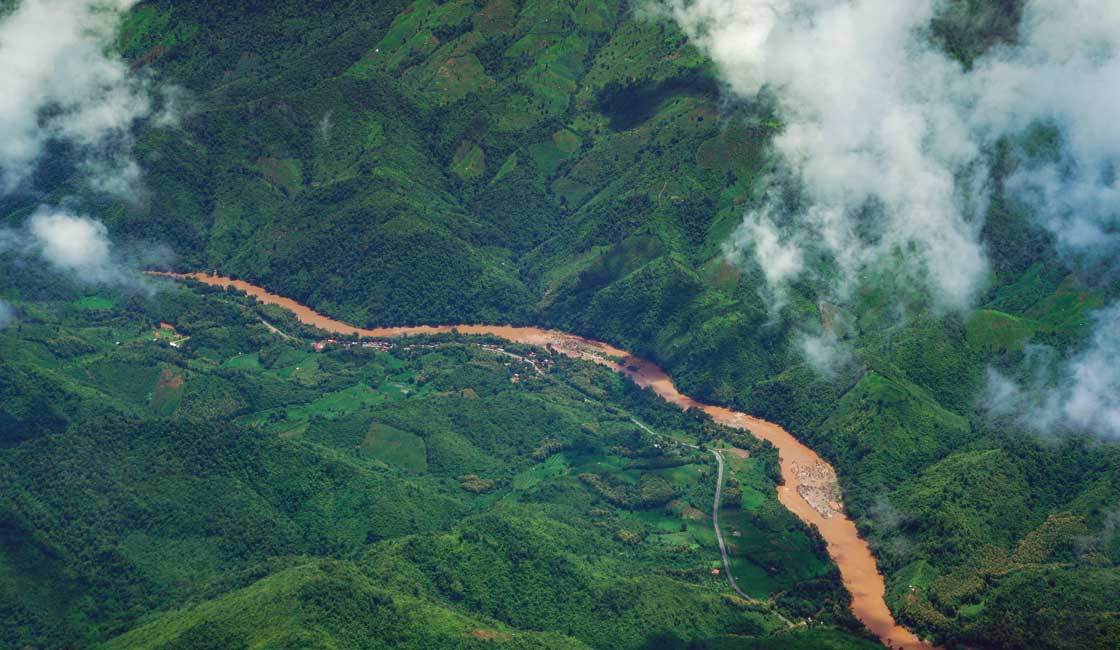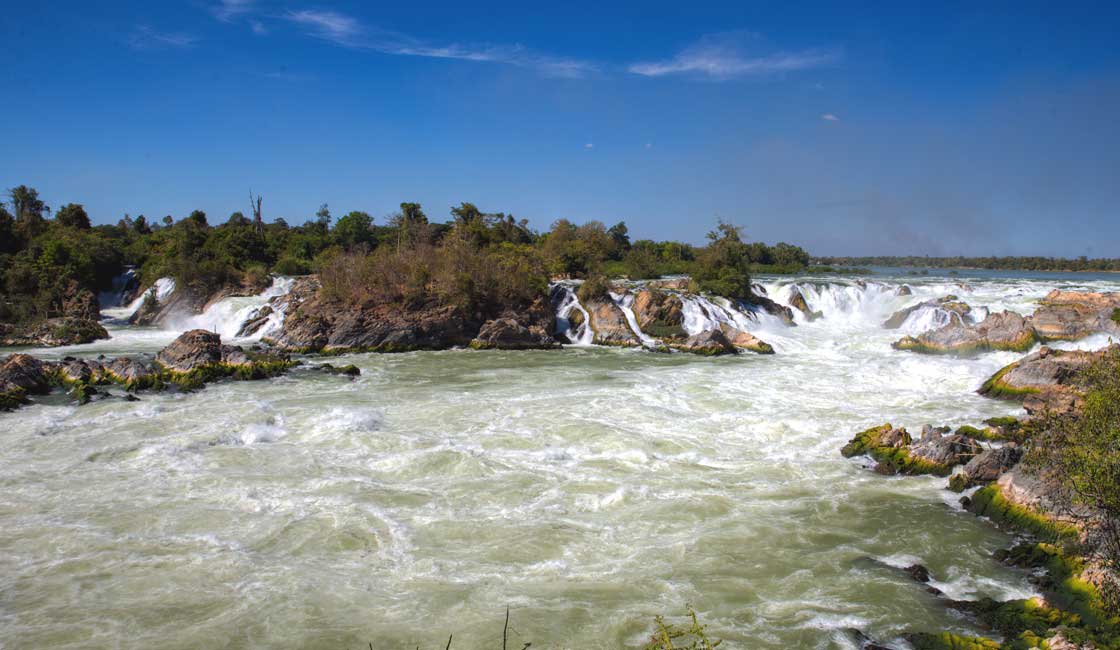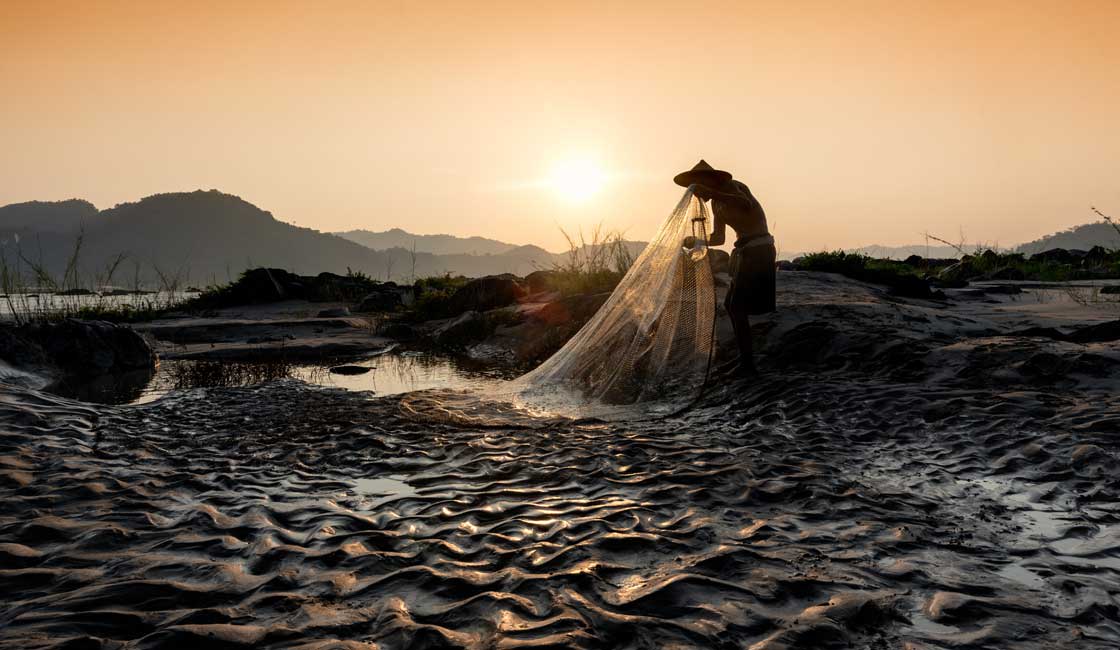
One of the world’s great waterways, the mighty Mekong River cuts right through the heart of Southeast Asia, flowing through 6 countries in total and harboring an astonishing array of wildlife, landscapes, and cultures along its banks. Embarking on a Mekong River cruise, like the Aqua Mekong, provides a fascinating insight into the local rural way of life, including the opportunity to visit some of the region’s best-known sites, along with plenty of hidden gems. Here are some interesting facts to get to grips with if you’re planning a visit to the Mekong.

Rapids on the Lao border
The Mekong River is the 12th longest river in the world, flowing from high up in the Tibetan Plateau, all the way to the South China Sea, some 4,500 km from its source. It drains an area of almost 800,000 km squared and traverses multiple countries, including China, Myanmar, Laos, Thailand, Cambodia, and Vietnam. The Mekong forms an important point of connection and unification between the region’s countries and its diverse peoples, landscapes, and cultures.
The river is fed by the melting snow waters of the Tibetan Himalayas and starts its journey through the steep mountain gorges of China’s Yunnan province. Gathering power from numerous tributaries along the way, the volume of water increases dramatically as it flows through the heart of the Golden Triangle. It passes the impressive Khone Falls in southern Laos, before widening out into the expansive Mekong Delta.

Sunrise on the Mekong
As the Mekong straddles so many international borders, it’s unsurprisingly known by many different names. Each one reflects particular characteristics of the Mekong, as well as being a testament to the great diversity of cultures and ethnic groups the river flows through. In China, it’s referred to as the Lancang Jiang, meaning “turbulent river”, whilst in Thailand and Laos it’s called Mae Kong or Mae Nam Kong, both meaning “mother water”. This is the most commonly-used name, reflected in the internationally-recognized “Mekong”. Meanwhile, in Vietnam, the river is often referred to as Cuu Long, or “Nine Dragons” owing to the multiple branches that emerge in the delta. Still, other names for the Mekong include River of Stone, Big Water and Dragon Running River.

Flood
The Mekong is a notoriously powerful river with significant variation in terms of its flow and volume according to the time of the year. In the upper regions, navigation is often difficult owing to rapids and waterfalls along its course, as well as the fact it is subject to extreme seasonal variations. In fact, 75% of the Mekong’s water flows during the Monsoon season between July and October. This usually results in substantial flooding throughout the river system. Interestingly, the delta region doesn’t have enough outlets, so the flow can actually start reversing upstream at some places. This causes water levels rise to lead to the so-called “flood pulse” that can have devastating impacts on the local communities living along the banks.

Fishing net
Over 60 million people depend on the Mekong for their primary source of income or sustenance, whether it be through fishing or agriculture, making it essential to the livelihoods of many. For millennia, people living around the river have depended on its water supply for sanitation, cooking, irrigation, as well as transportation.
Cambodia and Vietnam are especially reliant on the Mekong and subject to its changing conditions. Between 70-80% of people in these two countries depend on fish from the river as their main source of protein. In fact, the Mekong basin is home to the biggest inland fishery in the world, yielding some 2 million metric tonnes every year. Locals also use the river to irrigate crops and to access opportunities for trade as seen in Vietnam’s famous floating markets.
The Mekong is considered the second most biologically diverse river in the world, following the Amazon River Basin. It contains 16 WWF “Global 200” ecoregions. Thousands of plants, fish, amphibians, and mammals have been recorded in its waters and along its banks, including many rare, unique and previously unknown species. The delta region is particularly rich in life and home to iconic species such as the Siamese crocodile, the Sarus crane, Mekong Giant Catfish, Mekong Stingray and Giant Ibis. The Mekong is also one of the last strongholds of the magnificent and extremely rare Irrawaddy river dolphin. The river system is especially renowned for its magnitude and diversity of large fish species, whilst forests surrounding the river are home to a plethora of wonderful bird and mammal life.

Dry river bed
The Mekong is very much a wild river in many places, with significant portions remaining unnavigable. There are no major cities or industrial zones along its banks, whilst damns and bridges are still relatively few and far between. Still, it has served as an important trade route throughout history and developments are gathering pace in a bid to make stretches of the river more accessible, though not without controversy.
Current threats to the river and its immediate surroundings include plans for hydroelectric projects, flood control initiatives, as well as overfishing, deforestation and poaching. The impact of climate change is also a growing concern, with experts citing the increase in extreme weather, including heavier rains, bigger floods and more severe droughts, as potential threats to the integrity of the river system.
Threats such as these impact not only the river itself of course but also the wildlife and millions of people that depend on the Mekong for their livelihoods. China and Laos, in particular, have been spearheading development projects, whilst in Cambodia and Vietnam there are significant concerns about the potential impact on fish stocks, agriculture, and poverty. The nature of the river means that any developments upstream have a significant impact on the entire basin, which makes the politics surrounding the river of great importance to the region as a whole.
While Rainforest Cruises aim to provide accurate and up-to-date information, we make no representations as to the accuracy or completeness of any information herein or found by following any link on this site. Rainforest Cruises cannot and will not accept responsibility for any omissions or inaccuracies, or for any consequences arising therefrom, including any losses, injuries, or damages resulting from the display or use of this information.




